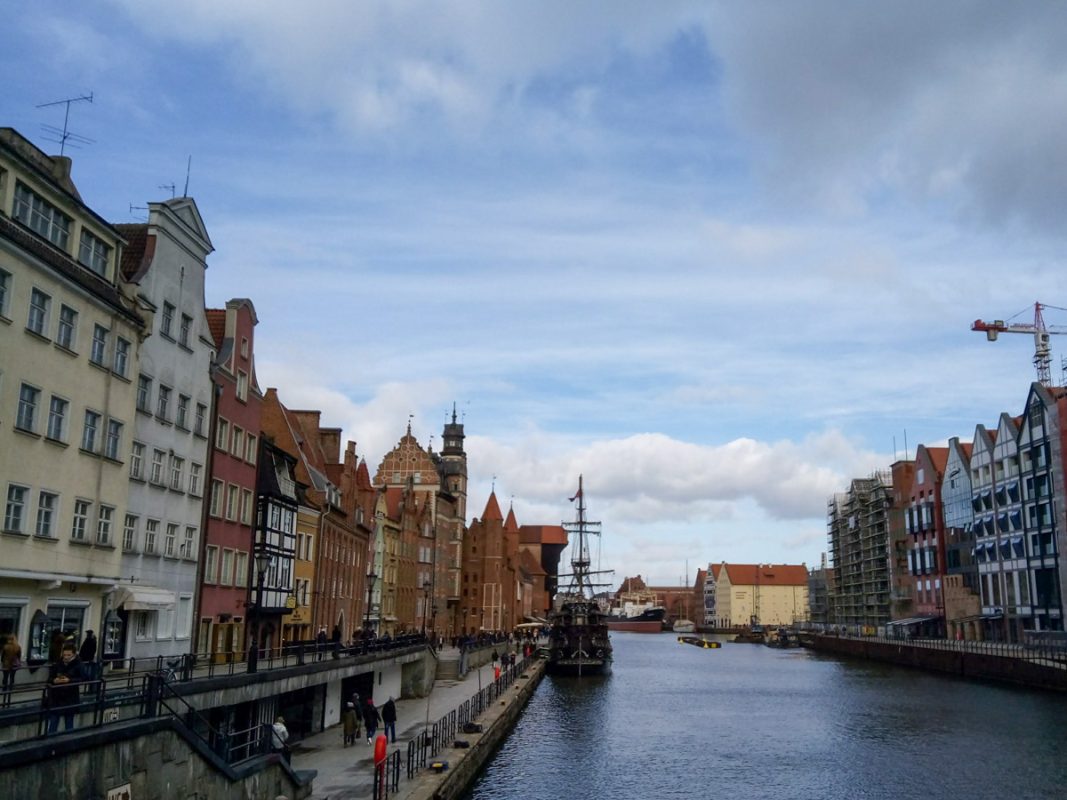Gdansk in winter: it’s a wonderland, with rooftops sparkling and that satisfying underfoot crunch of fresh snow.
Although temperatures often dip well below freezing, Gdansk comes to life in the cooler season – so swap your duvet for a good coat and check out the best Gdansk winter activities!
The city bursts with age-old traditions and modern festivities from November to March. Winter here isn’t just weathered, it’s celebrated with a contagious cheer.
One day, it might be the twinkling lights of the Gdansk Christmas Market that enchant you, the next, it could be the tantalising tastes at a local eatery.
I visited Gdansk in winter and accumulated a collection of tips and tricks to make it one of my most memorable city breaks on the continent.
So, here’s all you need to know about visiting Gdansk in winter!
This blog post contains affiliate links.
What’s Gdansk like in winter?
Sitting in the north of Poland, the change in season in Gdansk can be dramatic – but it’s the freezing, snowy weather that brings along an almost poetic transformation.
The facades of colourful buildings seem to gleam a little brighter against the frosty backdrop!
The locals, far from being deterred by the chilly weather, embrace the season with zest.
And the atmosphere? It’s as if the city collectively decides to turn up the warmth in response to the falling temperatures.
Cafés and restaurants emanate an inviting glow, their windows misted up from the cosy heat within.
Patrons inside can be seen enjoying hearty Polish stews and hot chocolate – fuel to brave the frosty weather.
The streets are alive with the gentle hum of winter activity, punctuated by the distant peal of church bells or the soft crunch of snow underfoot.
Even the city’s shipyards don an ethereal beauty, standing stoic and serene amidst the winter chill.
As evening descends, the city sparkles under a blanket of twinkling lights, while the aroma of mulled wine and gingerbread fills the air.
What’s the weather like in Gdansk in winter?
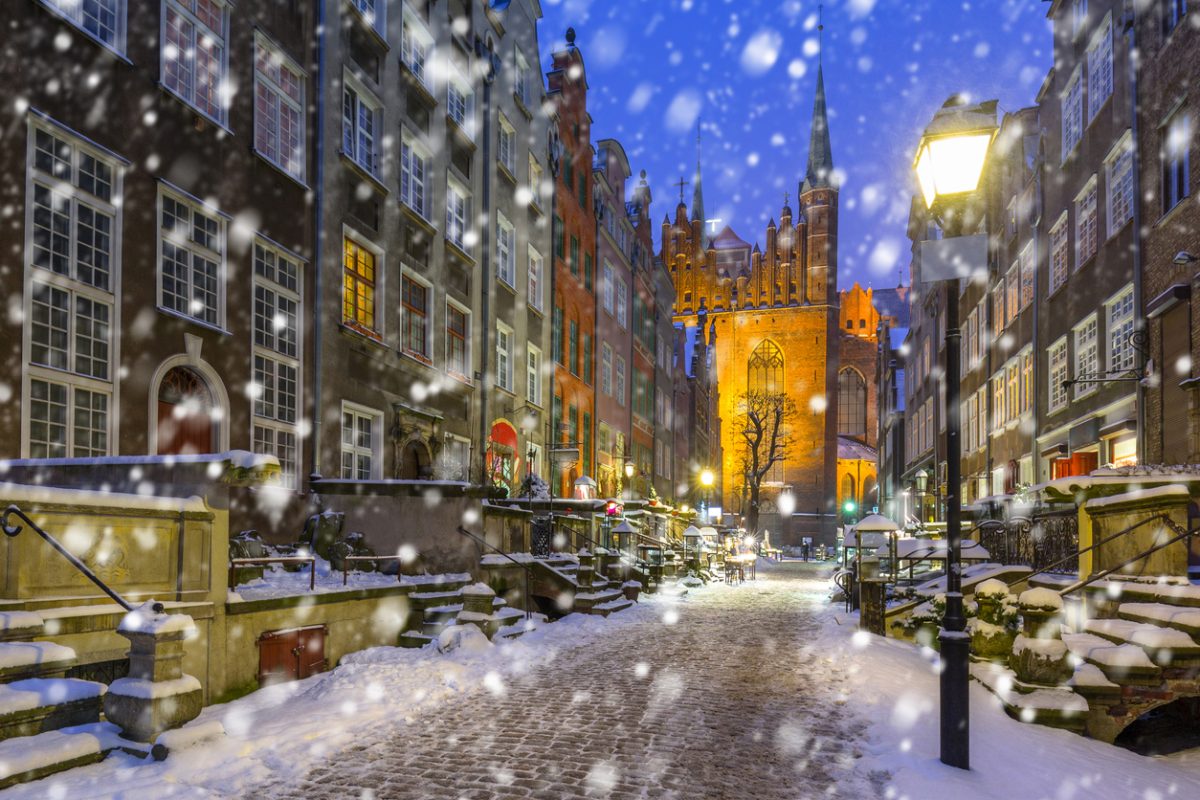
The city air cools significantly from November, marking the onset of the winter season.
The depths of December and January are marked by a notable chill and the city is often carpeted in snow.
This usually continues into February, which remains cold but by the end you may feel hints of spring – which gradually becomes more evident in March.
| Month | Average High (°C/°F) | Average Low (°C/°F) | Average Rainy Days | Average Snowy Days |
|---|---|---|---|---|
| November | 4 / 39 | -1 / 30 | 14 | 9 |
| December | 1 / 34 | -4 / 25 | 13 | 15 |
| January | -1 / 30 | -6 / 21 | 12 | 15 |
| February | -1 / 30 | -6 / 21 | 12 | 13 |
| March | 4 / 39 | -1 / 30 | 14 | 8 |
Things to do in Gdansk in winter
The best things to do in Gdansk in winter include strolling around the Christmas market (mulled wine in hand, of course!), exploring the many museums and admiring the beauty of Gdańsk Old Town as the sun sets – this is a Polish City with charm!
Gdansk Christmas Market
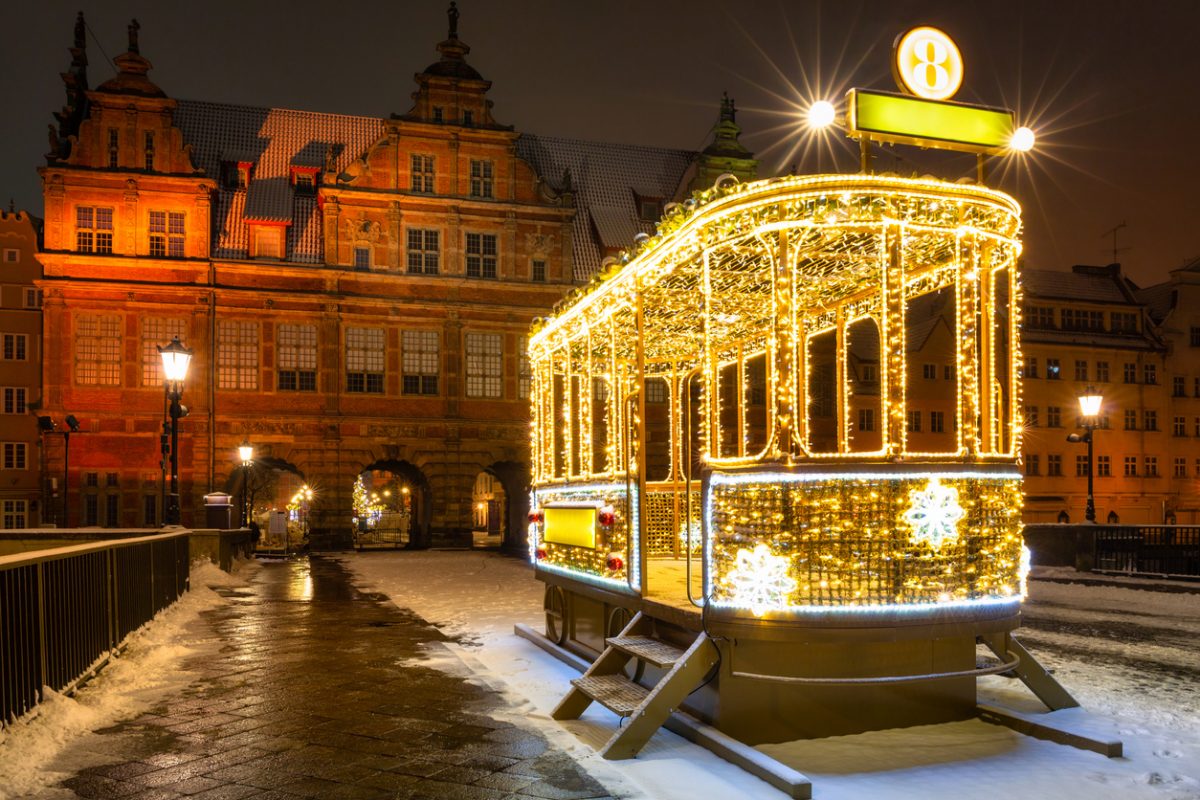
The Gdańsk Christmas Market is traditionally held at the Coal Market between two famous gates – the Golden Gate and the Upland Gate.
Its biggest attraction is AmberSky, a 50-metre-high viewing wheel, from which you can admire the panorama of the market and the city.
You can also enjoy a sledge flight simulator, or experience Elk Łucek talking with a human voice.
For the children, there’s Santa Claus Corner, where there is, among others, a Venetian carousel created especially for the Christmas market.
On weekends you can also see large-format animations as the Christmas Art Fair is held in the nearby Armoury.
Of course, at the festive market, there are plenty of stands with Polish delicacies and interesting gifts.
In addition, you can go to the Santa Claus Gift Factory, where you can buy official gifts from the fair and souvenirs from Gdańsk.
At the festively decorated stalls, craftspeople sell jewellery, ceramics and hand-made clothes, and some serve traditional cold cuts and dumplings.
It’s definitely one of the best festive markets in Poland!
Dlugi Targ Street
Dlugi Targ Street, the main thoroughfare of Gdansk, is a sight to behold in winter.
Take a leisurely stroll and admire the frosty architecture, from the historic buildings to the iconic Neptune Fountain.
In the festive season, the street’s bedecked in vibrant Christmas decorations, making evenings all the more magical.
Private walking tour with a local guide
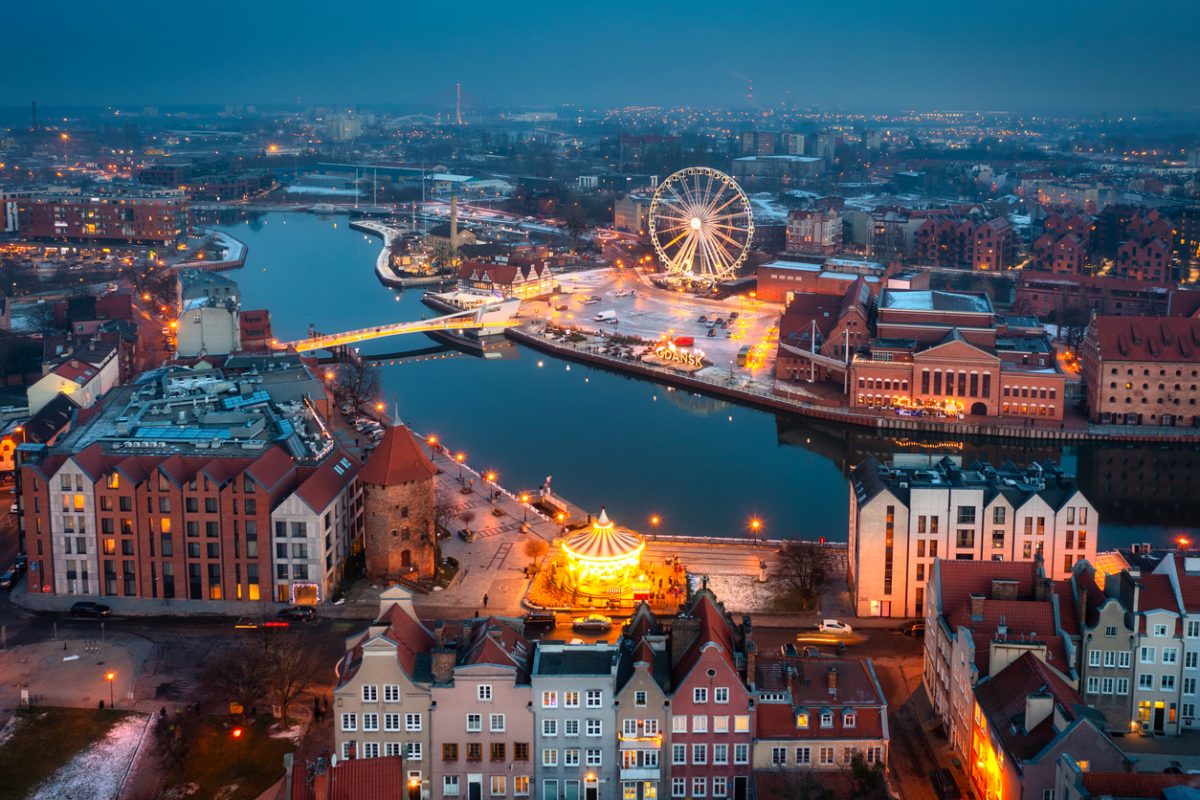
Maximise your time in Gdansk with a personalised private walking tour, curated to your interests.
Not only will you explore major sights like the UNESCO World Heritage Old Town, the Royal Way, and the emblematic Neptune Fountain, but your guide will also reveal hidden gems off the beaten path.
Gain a deeper understanding of Gdansk’s history with visits to the Gdansk Shipyard, the birthplace of the Solidarity movement, and the European Solidarity Centre.
This tour is perfect for groups (as you can split the cost).
If you’re on a tighter budget, check out this city sights and history guided walking tour – this one’s a group tour, so it’s substantially cheaper!
Experience Gdansk as only a local can show you!
Polish Baltic Philharmonic
Offering a symphony of classical music, the Polish Baltic Philharmonic is a delight for the ears.
Housed in a beautifully restored building, it hosts regular concerts throughout the winter season.
Evening performances usually begin around 7 p.m., and it’s recommended to book your tickets in advance.
Prepare to be whisked away by timeless compositions that provide the perfect backdrop to a wintry night in Gdansk.
European Solidarity Centre
Escape the chill and immerse yourself in a pivotal era of Polish history at the European Solidarity Centre.
Housed in a rust-clad modern marvel, this museum journey takes you from the 1970s Gdańsk shipyard strikes to the significant round-table negotiations of the late 1980s.
Experience life under communism, learn about the Solidarity movement, and appreciate the impact of Pope John Paul II, all through an impressive blend of multimedia and genuine artefacts.
Open daily from 10 a.m. to 6 p.m, a visit here is a step back in time, revealing Poland’s resilient spirit in the face of adversity.
Traditional Polish Cuisine

For a true taste of Gdansk, visit Kubicki Restauracja, the oldest restaurant in town which boasts a riverside location with stunning views of Gdansk.
Their menu features traditional favourites such as ‘pierogi’ – delicious dumplings filled with a range of fillings, and ‘gołąbki’ – cabbage rolls stuffed with meat and rice.
If you’re there for dinner, don’t miss the traditional fish soup with mussels and mushrooms as a starter and halibut on a baked potato with yoghurt and dill sauce for mains!
National Maritime Museum
Explore the riveting maritime history of Poland at the National Maritime Museum.
Open Tuesday to Sunday from 10 a.m. to 4 p.m., the museum allows you to delve into Poland’s seafaring past through an array of exhibits.
To avoid the rush, consider visiting in the late afternoon, and don’t miss the ship-models section, a definite highlight!
Remember to check their website for any changes to opening hours during winter.
Private Communism Tour with Solidarity Center Museum
Immerse yourself in the historical milestones of Gdansk with this private 2-4 hour tour focusing on the Solidarity movement and the fall of communism in Poland.
Start your journey at the European Solidarity Center, home to the original Tables of 21 Postulates, and unravel the roots of the Solidarity movement.
Continue to the Gdansk Shipyard, the birthplace of this pivotal movement.
Opt for the extended tour to further explore sites like Solidarity Square, the Monument to the Fallen Shipyard Workers of 1970, and the iconic Sala BHP.
Your history-rich expedition concludes with a quintessential shot of Polish vodka.
With a fluent English-speaking guide and convenient pickup from your accommodation in Gdansk Old Town, it’s a plunge into Gdansk’s storied past!
Click here to read more about it.
Museum of the Second World War
The Museum of the Second World War, open Tuesday to Sunday from 10 a.m. to 6 p.m., provides a comprehensive view of the war’s impact on Poland.
Here, you’ll find a range of exhibits showcasing wartime artefacts, personal accounts, and interactive displays.
It’s a large, in-depth museum – on my trip to Gdansk, I was here for hours – but you’ll leave with a better understanding of the origins of the war – and importantly, how we can avoid such atrocities in the future.
Malbork Castle
Dominated by gothic grandeur, Malbork Castle, a UNESCO World Heritage Site, reigns as the world’s largest brick castle.
Constructed by the Teutonic Order in the 13th century, this architectural marvel is divided into the High Castle, Middle Castle, and Lower Castle, each revealing unique aspects of the order’s life and function.
Steep yourself into the rich history of this remarkable site with a tailored tour.
Commencing with a convenient pickup from your Gdansk hotel, your English-speaking driver transports you to the castle.
On arrival, an expert guide unravels the castle’s secrets, leading you through the Palace of the Grand Master, St. Mary’s Church, and the intriguing Amber Museum.
This tour is the easiest route to the majestic Malbork Castle; you’ll learn all about it from your guide, and you won’t even need to sort transport out yourself!
Dive into Poland’s rich beer culture on a beer tour
Poland’s robust beer scene is uncharted territory for many visitors, but this Gdansk Old Town Beer Tasting Tour is set to change that.
Over the course of 2.5 to 4 hours, depending on your preference, you’re invited to savour 7, 11, or 13 different beers spanning popular, regional, and craft brews at 2 to 4 exceptional local breweries and pubs.
Your guide, a certified Gdansk beer expert (what a title!) uncovers the fascinating world of Polish beer for you.
Alongside the beer tasting, you’ll get the chance to nibble on a selection of matching Polish appetizers, snacks, and main dishes.
Whether you’re a casual beer lover or an aspiring connoisseur, this tour offers an invaluable glimpse into Polish beer culture!
Hewelianum Centre
Immerse yourself in the fun and learning at Hevelianum in Gdansk!
Experience four enthralling thematic zones with hands-on exhibits designed to spark curiosity in all ages.
Challenge your problem-solving skills in the Puzzle Room, witness the strength of a hurricane, and delve into the rich history of Gdansk’s iconic fort.
Here, you can explore ecology, military history, and cutting-edge technology all under one roof.
With views overlooking the city and a full day of interactive discovery, Hevelianum is your passport to a world of science and history, right in the heart of Gdansk.
Westerplatte
Westerplatte’s a peninsula of great historical significance.
It was the site of the Battle of Westerplatte which marked the beginning of World War II.
Despite overwhelming odds, the Polish garrison valiantly defended Westerplatte against German attacks for seven days before surrendering.
Today, it stands as a symbol of Polish resistance and courage.
The peninsula features a memorial and museum, offering insights into the battle and serving as a place of remembrance.
To get to Westerplatte from Gdansk, you can hop on bus number 106 from the city centre.
The bus stop you’ll want to look for is called “Muzeum Westerplatte,” located near the entrance of the peninsula.
If you’re looking for a more immersive experience, guided tours from Gdansk to Westerplatte are readily available.
These tours offer a convenient and enriching way to explore the site.
What sets these guided tours apart is the presence of an English-speaking guide who will accompany you throughout the visit, explaining why it’s such an important site.
Stutthof Concentration Camp and Westerplatte tour
Embark on a powerful and educational private tour of Stutthof Concentration Camp and Westerplatte, where you can delve into the haunting history of World War II.
This tour begins with pickup and leads to Stutthof, the first concentration camp established by the Nazis in Poland.
Explore the camp’s chilling landmarks, including prisoner barracks and gas chambers, while hearing the tragic stories of those who suffered there.
The tour then journeys to Westerplatte, an iconic symbol of the war’s beginning, where you’ll visit a military cemetery and witness the monumental tribute to the defenders of the Polish Coast.
Click here to read more about the tour.
Where to Stay in Gdansk
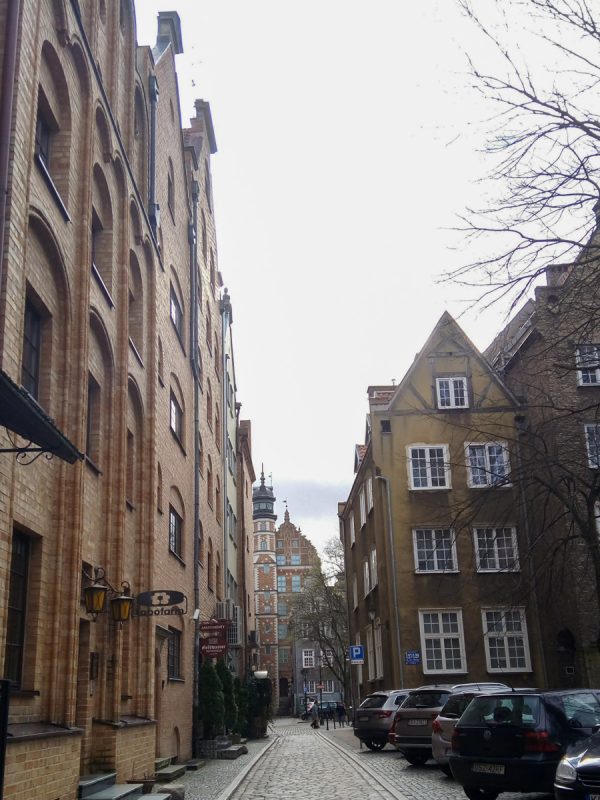
Hostel Mamas and Papas
Hostel Mamas and Papas, located near the picturesque Orunski Park and Gdansk’s Old Town, provides a warm and inviting stay for travelers.
Free amenities include breakfast, towels, lockers, parking, and a variety of teas and coffees. With its cozy rooms, good music, films, and friendly staff, it’s an ideal social space for guests.
Featuring comfortable beds, a hearty breakfast, and round-the-clock access, Hostel Mamas and Papas offer a home away from home experience in Gdansk.
Hotel Artus
In the heart of Gdańsk’s Old Town, Hotel Artus offers a boutique experience. Located just a stone’s throw from the vibrant Long Market, guests enjoy access to individually decorated rooms featuring modern amenities, including free WiFi and a safe.
With a focus on regional products, the on-site restaurant Atelier BonŻur serves a delicious buffet breakfast and evening meals with live music, all in a cosy setting.
Open 24/7, the friendly front desk staff are always ready to provide tourist information or arrange city tours. With a coveted location adjacent to historic landmarks and only 1 km from the main railway station, Hotel Artus is a favorite among travelers.
Puro Gdansk Stare Miasto
Puro Gdańsk Stare Miasto, a modern hotel in the heart of Gdańsk, is just moments away from key landmarks like the Green Gate and Long Market.
The hotel offers comfortable, air-conditioned rooms, each equipped with an iPad and a flat-screen TV, with private bathrooms featuring complimentary toiletries.
Guests have access to free WiFi, a restaurant, complimentary use of bicycles, and a 24/7 reception desk. The hotel also offers express check-in/check-out and laundry services.
With high praise for its comfort, cleanliness, and exceptional service, its superb location and facilities continue to draw in guests looking for a seamless blend of comfort and convenience.
What to pack for a winter visit to Gdansk

When planning a winter trip to Gdansk, pack smart to ensure you’re comfortable while navigating the city’s streets!
Layering is key – start with thermal undergarments and add sweaters or fleeces for warmth, topped off with a windproof and waterproof coat.
Don’t forget your warm winter accessories; pack a scarf, gloves, and a hat!
A sturdy pair of waterproof boots is recommended for walking through snow-dusted streets. For those crisp winter nights, consider packing thermal socks and pyjamas.
If you’re planning on attending any festive or formal events, make sure to pack some smart attire as well.
Getting around Gdansk in winter
Gdansk’s public transportation system, consisting of trams, buses, and the SKM suburban train, is efficient and reliable – even in winter.
Routes are well-connected, so you can reach any part of the city with ease.
You could consider purchasing a Gdansk Tourist Card which offers unlimited travel and discounted entry to various attractions.
Some services might operate on a reduced schedule during the winter months, especially on public holidays, so always check the latest timetables.
If you prefer, taxis and ride-sharing services like Bolt are readily available throughout the city.
If you’re driving, make sure your vehicle is winter-ready and always account for potential weather-related delays.
Winter Weather Safety Tips in Gdansk
While Gdansk is generally safe to visit during the winter months, keep in mind some safety tips specific to winter weather:
- Weather forecast: Always check the weather forecast before planning your day and dress appropriately for the conditions.
- Chance of ice: Be mindful of icy or slippery surfaces when walking around – pavements are usually cleared, but not always immediately.
- Rural areas: If you plan to take a day trip to rural areas or go hiking, be extra cautious as weather conditions can change rapidly.
- Daylight: Lastly, remember that daylight hours are shorter in winter, so plan your outdoor activities accordingly to make the most of the daylight.
Getting to Gdansk
Gdansk is well-connected and easily accessible from various parts of the country and beyond.
By Air: Gdansk Lech Walesa Airport is the main international gateway to the city. Numerous airlines operate regular flights connecting Gdansk with many European destinations. From the airport, you can take a taxi, a bus, or a train to the city centre.
By Train: Polish Railways (PKP) offers regular intercity services that connect Gdansk with other major cities in Poland, including Warsaw and Krakow. The train journey offers a chance to sit back and watch Poland’s diverse landscapes glide by your window.
By Bus: There are also several long-distance bus companies, such as FlixBus, that operate routes to Gdansk from cities across Poland and wider Europe.
Gdansk in winter FAQs
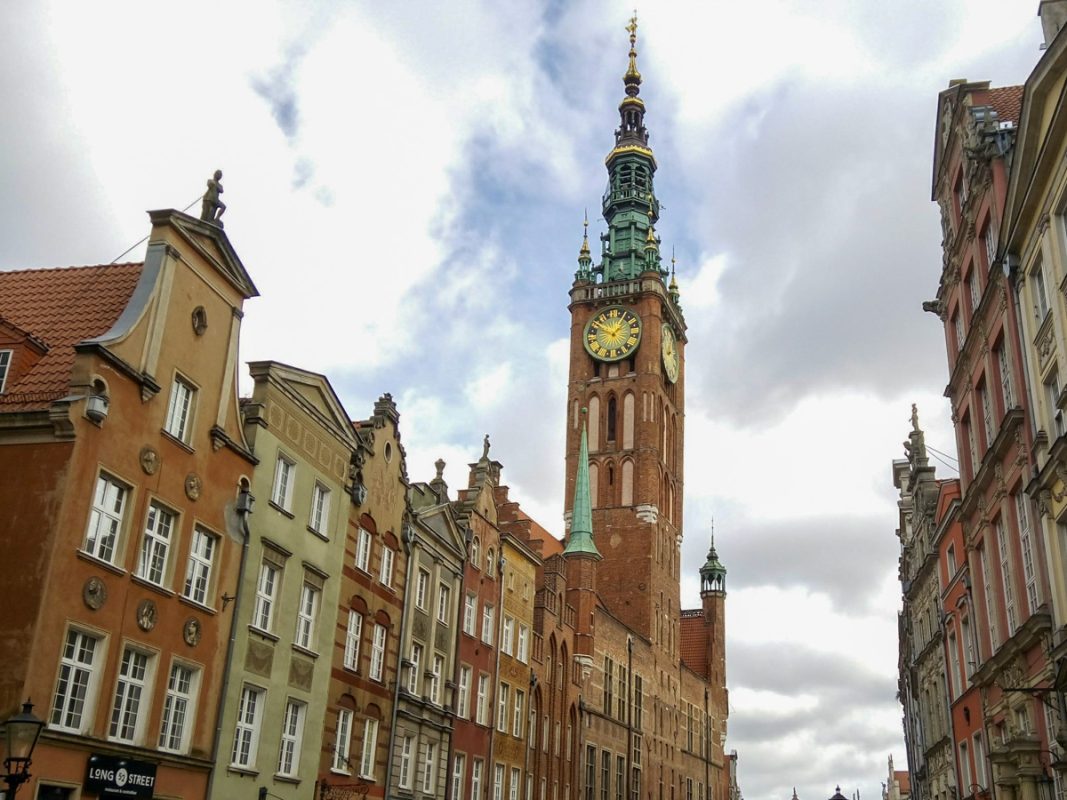
Here are some of the most-asked questions about visiting Gdansk in winter:
Is Gdansk worth visiting in winter?
Yes, Gdansk is worth visiting in winter. While the temperatures may be cold, Gdansk offers a unique charm during this season. The historic Old Town is beautifully adorned with holiday decorations, and you can enjoy fewer crowds, lower prices, and the chance to experience traditional winter festivities.
What is Gdansk like in December?
In December, Gdansk is often chilly with temperatures ranging from around 0°C to 5°C (32°F to 41°F). The city becomes festive with Christmas lights, decorations, and a joyful atmosphere. You can explore the Christmas markets, visit historic sites, and indulge in delicious Polish cuisine.
What is Gdansk like in January?
January in Gdansk tends to be cold, with temperatures ranging from -2°C to 2°C (28°F to 36°F). The city starts to calm down after the holiday season, making it ideal for those seeking a quieter and more relaxed atmosphere. You can enjoy winter activities, visit museums, and appreciate the city’s architecture.
What is the winter weather in Gdansk?
Winter weather in Gdansk is cold, with temperatures often hovering around freezing point. From December to February, temperatures range from -2°C to 5°C (28°F to 41°F). It is advisable to dress warmly and be prepared for snowfall, especially in January and February.
Is Gdansk better than Kraków?
Comparing Gdansk and Kraków is subjective as both cities offer distinct experiences – although most tourists prefer Kraków!
But Gdansk boasts a charming maritime atmosphere, a historic Old Town, and a rich history related to shipbuilding and the Solidarity movement.
On the other hand, Kraków is renowned for its well-preserved medieval architecture, vibrant nightlife, and proximity to the Auschwitz-Birkenau concentration camp.
Does Gdansk have a Christmas market?
Yes, Gdansk has a Christmas market.
Located in the heart of the city’s Old Town, the market offers a festive ambiance with stalls selling crafts, gifts, traditional food, and mulled wine.
Visitors can enjoy live music, carol singing, and a variety of seasonal delights, making it a lovely experience during the holiday season.
Do people in Gdansk speak English
Yes – Polish people can generally speak English very well and many people, particularly those working in the tourism industry, speak English in Gdansk.
Signs, menus, and information in popular tourist areas are often available in English as well.
Outside of tourist-centric areas, proficiency in English may vary, but you can usually get by with basic English communication, particularly with the younger generation.
How many days is enough for Gdansk?
To fully explore Gdansk and experience its highlights, we recommend spending at least 2 to 3 days in the city.
This allows you to visit the historic Old Town, explore museums, take a boat tour, and enjoy the local cuisine.
If you have more time, Gdansk serves as a great base to explore the nearby Tri-City area, including Sopot and Gdynia.
Which is better, Wroclaw or Gdansk?
Generally, Wroclaw is seen as prettier, but Gdansk has more history.
Gdansk is known for its maritime history, charming Old Town, and proximity to the Baltic Sea.
Wroclaw, on the other hand, enchants visitors with its stunning architecture, vibrant market square, and picturesque canals.
Is it expensive in Gdansk?
Gdansk is generally considered affordable compared to many European cities.
Prices for accommodation, food, and attractions in Gdansk are quite a bit lower than in cities like Paris or London.
However, prices may vary depending on the season and location.
Overall, Gdansk offers good value for money and can be enjoyed on a reasonable budget!
Are you ready to visit Gdansk in winter?
It may be chilly, but Gdansk’s variety of seasonal and indoor attractions, along with warming food (and vodka!) and vast swathes of history make it well worth a visit.

